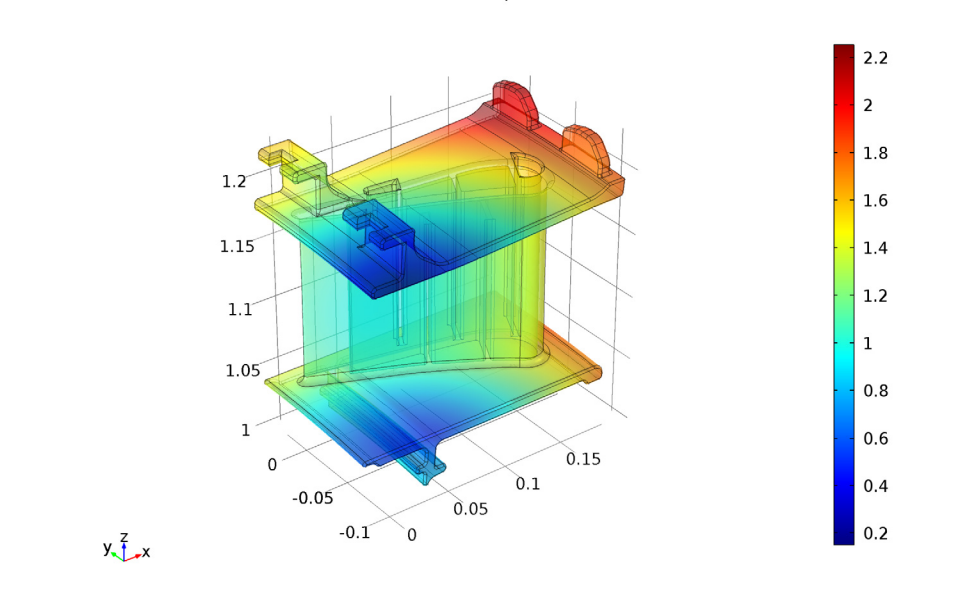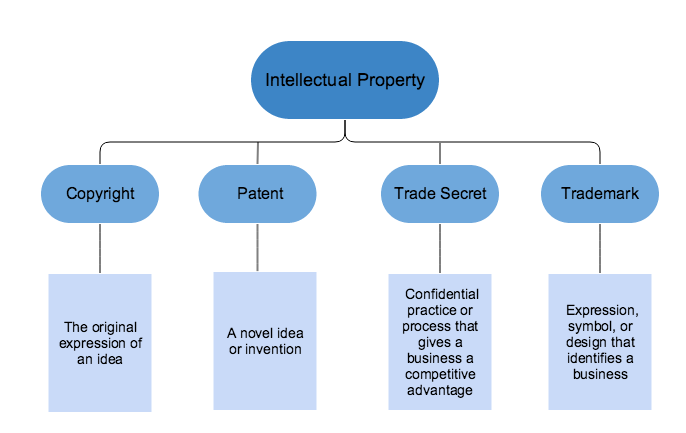
In the science and engineering community, models are vital to design and development. But can models be protected by copyright law? Establishing the level of creativity required for copyright protection is relatively easy in comparison to patent law, which requires inventions to be novel and non-obvious. Additionally, copyright law does not require the secrecy measures needed to qualify for trade secret protection. We explore the appeal of using copyright to protect models and the functionality built around them.
What Is Scientific Modeling?
Scientific modeling is a process designed to apply aspects of a real-world situation in a simplified format — a model. For the purposes of this discussion, we will consider scientific models to be simplified representations of objects, phenomena, and/or physical processes that help address a particular element of reality.
A mathematical model consists of equations and conditions that describe a process or device. These equations originate from the laws of physics and constitutive relations, which are based on physics concepts such as the conservation of energy or the conservation of momentum. When the mathematical model equations are difficult to solve, they may be approximated by simpler numerical model equations. The solution to the model equations generates a simulation of the process or device for the specified conditions subject to the laws and relations. The results of this simulation are presented through visualization.
Simulation brings such models to life, providing useful information on the dynamics behind the process or system, resulting in both understanding the concepts and relationships being modeled, and providing quantification of those concepts and relationships.

Visualization of the thermal stresses obtained by simulation of a turbine stator blade using a numerical model (finite element model).
Thus, the formulation, solution, and visualization of a model and its corresponding results may involve the application of abstract concepts to complex relationships, choices about how to express this process, and no small measure of ingenuity with respect to both.
Copyright and the Idea-Expression Dichotomy
Let’s now review some copyright basics. In the U.S., copyright protects original works of creative expression (i.e., not the abstract ideas, but rather the choices made in coming up with the particular words, images, and/or sounds used to express or implement the ideas), when that expression is fixed in a tangible medium. These media can be a recording on a piece of paper, computer memory, or a DVD, to name a few. To provide a better overview of copyright in comparison to other forms of intellectual property, we have created the chart below.

Different forms of intellectual property.
The U.S. Copyright Act specifically excludes the following from those works eligible for protection: “any idea, procedure, process, system, method of operation, concept, principle, or discovery, regardless of the form in which it is described, explained, illustrated, or embodied in such work.” According to the U.S. Copyright Office, this exclusion includes in its reach “scientific or technical methods or discoveries;” “mathematical principles;” and “formulas or algorithms.”
Furthermore, when there is only one or a very limited number of ways to express an idea, the idea and expression “merge”, so as to eliminate the possibility of copyrightable subject matter. This distinction between protected creative expression and unprotected ideas and the like is known as the idea-expression dichotomy.
Equations and Figures
Some models encounter difficulties in clearing the threshold set by the idea-expression dichotomy. The 2011 decision in the case of Ho v. Taflove is one example. In this case, a federal appellate court in Chicago held that an engineering professor and graduate student failed to prove that another professor and student had copied any protected elements from a “4-level 2-electron atomic model with Pauli Exclusion Principle for simulating the dynamics of active media in a photonic device.” The court described this model as “a new mathematical model of how electrons behave under certain circumstances.”
The ruling in the case was that the equations and figures contained in the model were not capable of attaining copyright protection and that there was no evidence found that it was possible to use different equations or figures to depict the concepts at issue. The court observed the following: “Although equations can be rearranged through the laws of mathematics, the substance of the equation nevertheless remains the same.” In spite of the creators’ argument that the model reflected hypothetical assumptions, the court found no original creative authorship in the equations and figures, which attempted to describe reality and mimic nature.
Other courts addressing the status of items reflecting scientific principles have reached similar results. The case of Gates Rubber Co. v. Bando Chem. Indus., Ltd involved a ruling on certain constants in a computer program dictated by scientific observations of physical relationships in regards to the load a particular belt could carry around gears of a certain size at certain speeds, in light of other variables. A federal appellate court ruled that those constants were not creative expressions but rather facts that were not capable of copyright protection.
Indeed, the U.S. Supreme Court opined the following long ago in Baker v. Selden: “The copyright of a work on mathematical science cannot give to the author an exclusive right to the methods of operation which he propounds, or to the diagrams which he employs to explain them, so as to prevent an engineer from using them whenever occasion requires.”
Text, Format, and Arrangement
The decision in Ho v. Taflove merely resolves the legal status of the particular elements of the model that were at issue before that court. Other courts are free to interpret the U.S. Copyright Act differently until any conflicting issues are resolved by the U.S. Supreme Court, and copyright laws, of course, vary from country to country.
That said, the case itself identifies some other elements of models whose status was not resolved in that case and therefore have at least the potential to lead to different outcomes in other cases. The creators of the model at issue in Ho v. Taflove argued that the text in that model could have been written in multiple ways. As a result, they asserted that the particular text chosen for that model reflected creative choices capable of copyright protection.
The court ruled that the creators of the model failed to come forward at the proper time in the trial court with evidence supporting this argument and therefore lost the right to make the argument. However, the court quoted a past decision suggesting that textual discussion of scientific principles can be copyrightable: “Einstein’s articles laying out the special and general theories of relativity were original works even though many of the core equations, such as the famous E = mc2, express ‘facts’ and therefore are not copyrightable.”
Also not at issue in the Ho v. Taflove case was the status of the elements of a model that may be included for the purpose of presentational effect. The court distinguished a past case — Flick-Reedy Corp. v. Hydro-line Mfg. Co. — where it was ruled that copyright could protect the “arrangement, expression and manner of presentation” of mathematical data even if such protection was not extended to the equations and formulas within that work. They observed that the creators of the model did not claim that the copying at issue involved elements of creative presentation such as color or font. That said, copyright protection has been denied where the claimed expression consisted of “mere variations of typographical ornamentation, lettering, or coloring.”
Technical Drawings
Technical drawings are central to many models. The status of technical drawings was not addressed in the Ho v. Taflove case, but it has long been recognized that technical drawings are potentially eligible for protection under U.S. copyright law. The protection afforded to such technical drawings, however, is limited.
A distinction must first be made between a drawing or illustration of an existing object and a drawing or illustration that does not depict an existing object. For example, with respect to a 3D model that replicates a useful article or an architectural work, the U.S. Copyright Office will only recognize copyright protection where the model “includes a substantial amount of original authorship and […] contains some original differences from the object depicted.” However, a drawing, painting, or photograph of an object may be protected to the extent that the work reflects original creative choices made. For a drawing or painting, this refers to choices made with respect to matters such as linear contours, shading, color selection, and brush strokes. In the case of a photograph, this refers to choices made with respect to angle, lighting, camera placement, lens selection, and timing. You can learn more about this distinction in the Compendium of U.S. Copyright Office Practices.
For a technical drawing that does not reflect pre-existing objects, copyright protection will not extend to elements of the drawing that are wholly dictated by the functional and utilitarian constraints of the object and its environment. Just as the decision to include snakes in a work of fiction that is set in a cave will not be protected, so too will copyright law not protect design features dictated by the use of an object that is drawn. As with other types of works, copyright protection will not “extend to any idea, procedure, process, system, method of operation, concept, principle, or discovery” that may be reflected in a technical drawing, as noted here.
In the case of National Medical Care, Inc. v. Espiritu, a trial court in West Virginia ruled that the creator of technical drawings for medical cabinets could not obtain protection for items “dictated by the cabinet’s use in a medical facility,” such as the use of plastic surfaces on the cabinets. Copyright protection was instead limited to the extent to which the drawings depicted an original creative arrangement of such utilitarian features. Changes in dimensions, numbers of drawers, and decorative elements were sufficient to avoid infringement despite commonality in utilitarian features like a valve box allowing access for repairs and sink dividers and laminates for maintaining a sterile environment.
The fact that the object is utilitarian and the features drawn have functional significance does not mean that a technical drawing is necessarily deprived of copyright protection with respect to design features not dictated by that functionality. For example, in Oldcastle Precast, Inc. v. Granite Precasting & Concrete, Inc., a trial court in Seattle ruled that the creator of technical drawings for a precast concrete vault had produced sufficient evidence to be able to go to trial to prove infringement. An expert witness identified 45 similarities in the size, scale, and dimensions of the vaults depicted in the respective parties’ drawings, with 22 of those features being identical. The court found that it was possible to make drawings of such vaults with visual differences that would avoid such overlap and that there was “nothing inherent in the notion of precast concrete vaults that limits their range of expression.”
Finally, with the exception of certain architectural works where the finished structure is recognized as a separate work from the drawing and granted a limited form of protection, technical drawings are eligible for protection solely with respect to the graphical or artistic rendering in the drawing. According to the U.S. Copyright Office, any useful article depicted in such drawings may be built based upon the drawing, so long as the drawing itself is not reproduced.
Computer Programs Designed to Implement Models
The implementation of models in computer code is another feature of certain models that is suggested by the Ho v. Taflove case. In this case, the model that was claimed to be infringing was implemented in a computer program. However, Ho v. Taflove did not involve any claim of copying computer code from the original model. Therefore, the decision did not address the status of computer programs that implement models.
In the U.S., computer programs have long been recognized as among the class of works potentially eligible for copyright protection. Because computer programs must clear the same threshold as other works for protection set by the idea-expression dichotomy, copyright protection is not extended to a program’s algorithm, formatting, functions, logic, or system design. For more information on copyright protection for literary works, see here.
Due to the idea-expression dichotomy and because copyright does not extend to elements necessitated by the external environment of the work, courts have ruled that copyright protection for computer programs does not extend to programming decisions dictated by certain elements. This includes decisions dictated by efficiency, mechanical specifications of the hardware on which the program will run, compatibility requirements of the operating system with which the program must run, computer manufacturers’ design standards, demands of the industry being serviced, or widely accepted programming practices.
Thus, to the extent that original creative choices are made in implementing a model within a computer program, the resulting program may be eligible for copyright protection. Furthermore, to the extent that the program includes added functionality beyond the core model, that additional functionality may be eligible for protection under the standards applicable to computer programs. With the Application Builder — introduced in COMSOL Multiphysics® version 5.0 and featuring new improvements in version 5.1 — you can now create your own applications, adding a wide range of functionality to your models.
The views expressed in this blog post are offered for purposes of discussion only and should not be construed as legal advice or as the official position of COMSOL on any legal matter. Nor are the views expressed here intended as exhaustive coverage of the subjects addressed here. Each situation is different, and different circumstances may result in different legal outcomes.




Comments (0)